 by Karen Frazier
by Karen Frazier
Almost every day, I write about food. On the days I am not writing about it, I am often editing something someone else has written about food. I spend hours a week combing through the latest studies about how food affects our bodies.
Scientific writings break food down into its components – macronutrients (protein, fats, and carbs) and micronutrients (vitamins and minerals) – and the roles each of these play in our bodies. Science studies and explains how food affects weight and how it affects health. It explains how our bodies break down and digest the foods, how they store them as saved energy (fat) or use them for current energy. It studies how our bodies absorb nutrients and what it does with them.
Science is at least beginning to acknowledge the foods we eat affect our physiology, and then people like me share that information with others who are looking to affect some aspect of their biology, such as gaining or losing weight, lessening inflammation, or controlling certain health conditions through food.
Food is fuel, we are told. Use it wisely, and your body can’t help but respond. Simple, right?
If it were that simple, everyone would be the picture of health. We would see food as fuel, eat the foods we need, avoid those we don’t, and all be in optimum health. Since we don’t and we aren’t, clearly something else is going on, as well. How food affects us physically is certainly an important part of the picture, but it’s not the only part. To pretend food should merely be treated as fuel does everyone a disservice.
Humans are not like a simple gas-powered engine in which you pour the right amount of fuel and the engine performs. We are complex, multi-dimensional beings made up of far more than biology. We are body, mind, spirit, emotions, memories, conditioning, members of families and societies, and so much more. And food – which sciences suggests should merely be fuel – weaves itself throughout every one of these aspects of self, rendering it impossible to separate it into a simple biological component.
Close your eyes and think of a food from your childhood – one that you loved. How does it make you feel? I would guess that while there is a physical response, that is only part of the answer. Whatever food you are thinking of most likely has associations that are familial, cultural, emotional, and possibly even spiritual.
Food is deeply entrenched in every aspect of our lives. It is part of family celebrations and cultural traditions. We use it as reward and punishment. We connect it to abundance and scarcity. We use it in spiritual ceremonies and traditions. We use it to show love, generosity, and sharing. It serves as a way to gather socially. We use it for humanitarian purposes. Some control it in order to retain power. It can be used for social and behavioral conditioning. These are just a few of the many aspects of our lives in which food resides.
Here’s the problem I see: when we treat food as simply biological and fail to acknowledge the key position it occupies in mind, spirit, and emotions, we create a system in which people are most likely bound to fail in their goals about food. Food has to be more than fuel if we want to use to to improve our health. So people like me, who write about the health aspects of food, must find ways to make sure food continues to meet the mental, spiritual, and emotional needs of the individual, as well.
Food has to do more than just be biologically nutritious if we want to make a lasting change that affects our health. In order to truly connect to eating for health, we also need to connect to the things that truly matter about the foods we eat. We need new “rules” about food in order to truly begin to nourish ourselves in the ways we need for good health.
1. Start With Foods You Know Will Nurture You Physically
It still starts with food and selecting those that will help build your physical wellbeing. Choose the most nutritious, ethically raised, healthful ingredients available that you can afford. There’s plenty of information available about what these foods are – depending on physical health conditions and dietary needs. This is where you start, but it is important to go beyond just considering these foods as fuel.
2. Choose Foods That Please Your Senses
You eat with your all of your senses. Therefore, choose food that looks, tastes, and smells delicious. Consume foods with a satisfying balance of colors, textures, flavors, and aromas. Find foods with a delightful crunch or a satisfying slurp, or those that are pleasing to the eye and have your stomach growling before you take your first bite. Combine raw and cooked foods to vary texture and flavor. Cut foods into fun and interesting shapes. Use pretty garnishes. Balance the flavors of sweet, sour, bitter, salty, spicy, and umami.
3. Consume Foods From Cultural Traditions That Matter to You
Food is cultural. Therefore, it is essential to create and find nutritious foods from cultural traditions that matter to you. That doesn’t just mean foods from your culture, but also from other cultural traditions that have meaning – or that you just love because they make darn good food. Use herbs and spices to create a variety of flavor palates, such as the piquant and spicy Latin flavors, aromatic Asian flavors, or hearty, classing Western foods.
4. Choose Foods Connected to Good Memories
Food is tied to memory and comfort. Because of this, it is important to consume nutritious foods that are in some way similar to those you have eaten that have brought you joy in the past. They don’t have to be exact replicas, but rather have the essence of those other foods.
5. Skip the Foods That Have no Soul
It’s so easy to mindlessly eat something that has very little meaning or soul. Twinkies come to my mind for me as the ultimate soulless food. There is no love there. Nobody lovingly prepared a Twinkie for you. It’s a Frankenfood designed to be quick, sweet, and easy.
I’m not denying a Twinkie has its appeal. But does it have soul? There is nothing alive. There’s nothing that will nourish you.
Nobody created soulless foods with the idea of nourishment in mind. They were created for one reason: profit. While it may taste good, does the food has soul? Ask yourself who has made it, and for what reason has this food been prepared. If the answer doesn’t have to do with nourishment or some type of a personal connection, chances are it’s not a food that’s going to satisfy your mind, body, emotions, or spirit.
6. Prepare Foods With Consciousness and Intent
As you prepare your foods, do it with love for yourself and anyone else who will be consuming them. Intend, as you prepare the food, that its ingredients and nutrients will nurture you not only physically, but will also honor you emotionally, mentally, and spiritually.
7. Give Thanks
Food is spiritual; it’s often used in spiritual ceremonies and rituals. Therefore, if food is part of your spiritual tradition (or even if it isn’t), engage in a sense of spirituality and ritual when you eat. Before you eat, give thanks. If you eat animal proteins, honor the animal that provided the food. Give thanks to the earth for supporting and nurturing the plant-based ingredients you are about to consume. Then, offer the intention the food will nourish your body and your spirit, matching or raising your spiritual vibration.
8. Eat Mindfully
Pay attention as you eat. Make eating an event – not something you do as you engage in another activity. Create a space for eating where you are not distracted (put down the smartphone! Turn off the television!) Eat mindfully, chew slowly, and allow yourself the full sensation of that which you are eating. Notice how the food smells, looks, and tastes. Pay attention to its texture as you chew and how it feels as it travels down your throat into your stomach.
More Than Fuel
It’s time to acknowledge food is more than just fuel. To do anything else makes it difficult for us to truly allow foods to nourish us and support our overall health and wellbeing. Try these eight suggestions as you pursue good health through food to acknowledge the role food plays in all aspects of your being.
photo credit: Neil Tackaberry kiwi via photopin (license)
 I’m overjoyed to announce the release of my latest book, Higher Vibes Toolbox. This is a different type of book than I typically share here at Modern Ancestor. Typically, I keep my two writing lives separate – the writing I do as a health author, and the writing I do as an energy healer. I even have two websites that separate one from the other. In my latest book, however, the two worlds converge. Actually, I believe they’ve always been intricately linked. Body, mind, and spirit are inseparable, and you must nurture all three in order to live your most vibrant life.
I’m overjoyed to announce the release of my latest book, Higher Vibes Toolbox. This is a different type of book than I typically share here at Modern Ancestor. Typically, I keep my two writing lives separate – the writing I do as a health author, and the writing I do as an energy healer. I even have two websites that separate one from the other. In my latest book, however, the two worlds converge. Actually, I believe they’ve always been intricately linked. Body, mind, and spirit are inseparable, and you must nurture all three in order to live your most vibrant life.
 by
by 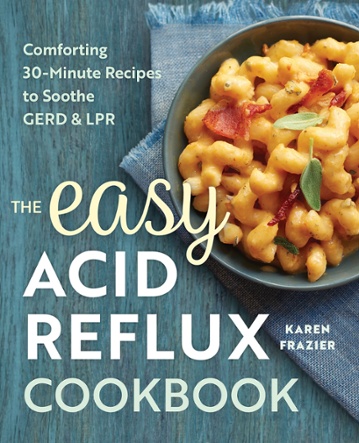

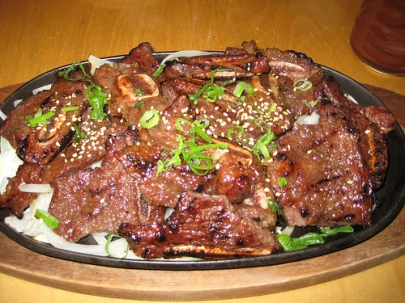 by Karen Frazier
by Karen Frazier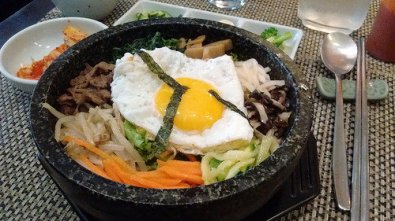 by
by 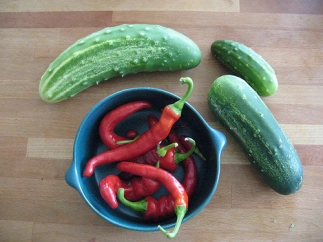 by
by 
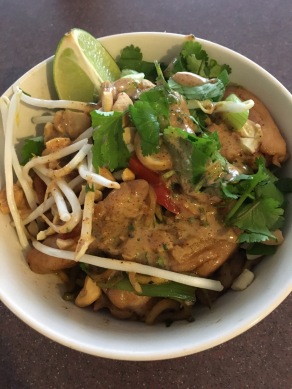 by Karen Frazier
by Karen Frazier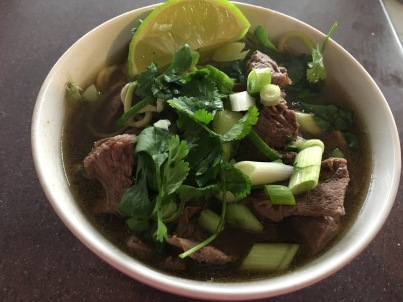 The first time I tried ph’o, I knew I’d found something special. It’s possibly my favorite soup of all time (ha! I say that about a lot of soups. I just. Love. Soup!). Anyway – it’s been almost three years without it, and I knew it was time to give it a try. I had some flat iron steaks, and I realized ph’o would be the perfect use of the steak. Jim, who pretty much believes meat should be used as – well, meat – was skeptical. However, I’m happy to say he’s a convert.
The first time I tried ph’o, I knew I’d found something special. It’s possibly my favorite soup of all time (ha! I say that about a lot of soups. I just. Love. Soup!). Anyway – it’s been almost three years without it, and I knew it was time to give it a try. I had some flat iron steaks, and I realized ph’o would be the perfect use of the steak. Jim, who pretty much believes meat should be used as – well, meat – was skeptical. However, I’m happy to say he’s a convert.